Supply Chain Sustainability and Technology Offer Answers to IPCC Report
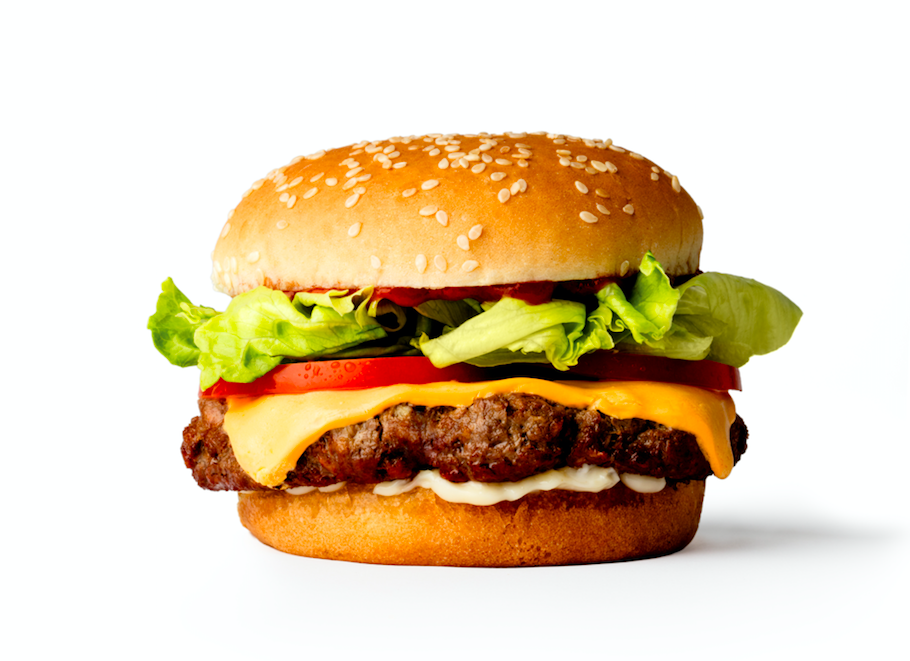
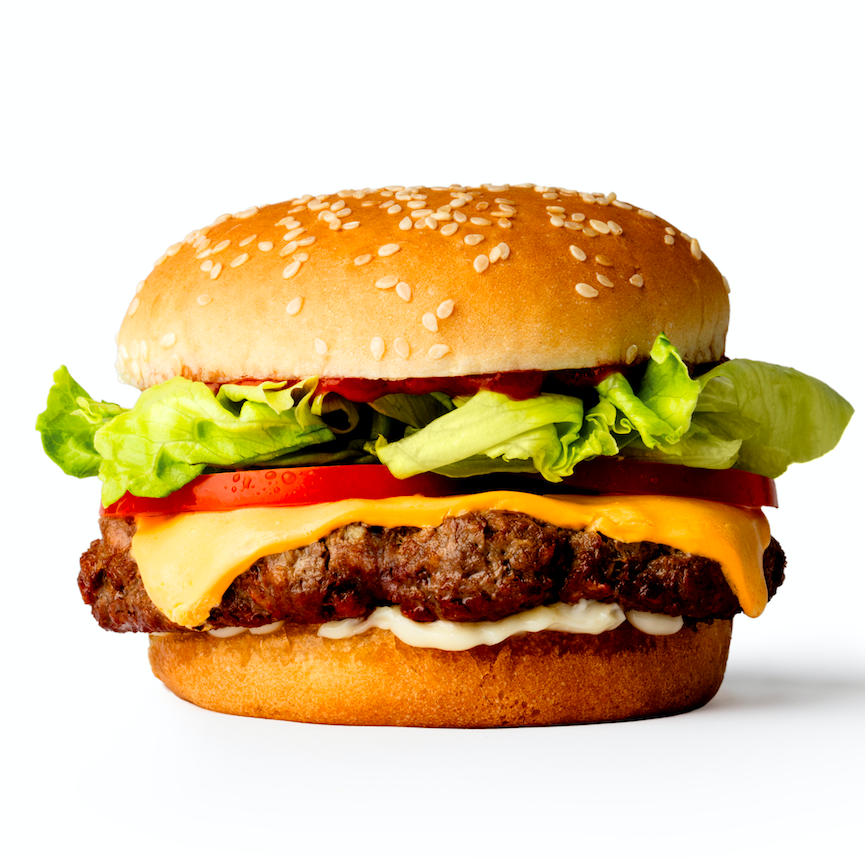
Yesterday, we discussed some of the high-level findings issued in the Special Report on Climate Change and Land by the U.N. Intergovernmental Panel on Climate Change (IPCC), which focused on how the rise in global temperatures, along with increasing pressure on the agricultural system, together are putting food security at risk worldwide.
Today, we’ll dive into how a rethink of what we eat, harnessing the best possible technology, and strategic investments in the supply chain together can help make the global food and agriculture sectors more sustainable before the world falls into crisis.
By investing in such changes, food companies can ensure their long-term viability, while taking a stand on sustainability, as startups have with meat alternatives—one multinational, in fact, has even focused on mint farmers in its supply chain.
Developing delicious plant-based foods
Let’s start with what might be the most contentious topic out of the report for some: moving toward a plant-based diet.
Scientists generally agree that approximately 33 percent of arable land is now devoted to crops that will be used for animal feed. On top of that statistic, farmed animals produce half of the world’s methane emissions. And livestock such as cattle and lamb are particularly inefficient, because these animals need lots of space to graze, and in nations such as Brazil, that land is often space that used to be covered with forests.
“Shifting to a plant-based diet would be a significant catalyst for combating climate change," said Andre Laperrière, executive director of Global Open Data for Agriculture and Nutrition (GODAN), in an emailed statement to TriplePundit.
One of the best examples that showcases this shift is Impossible Foods, which, for more than a decade, has been finding ways to turn plant-based ingredients into meat alternatives. This upstart's secret: Heme, an essential molecule found in every living plant and animal, which is what makes meat taste like meat.
According to the company, one Impossible Burger (instead of a burger made from beef) uses 96 percent less land and 87 percent less water and produces 89 percent fewer GHG emissions.
And it’s not just burgers. Impossible Foods’ plant-based options, in addition to other brands that make similar products, can be used to replace meat on your chili cheese fries, in your meat-less meatballs, in your tacos and your empanadas . . . the list goes on and on.
Supply Chain Sustainability: M&Ms without deforestation
In another example: We all love chocolate. But churning all those cacao pods into sweets is wreaking havoc on the world’s forests. As part of its Cocoa for Generations plan, Mars says it is creating a deforestation-free global cocoa supply chain for such iconic sweets as M&Ms, Twix and Snickers.
To date, the global food giant claims it has GPS-mapped 24 percent of its global cocoa supply chain to the farm level. Mars also claims to have made significant progress in tracing the cocoa it sources to a country of origin via its first-tier direct suppliers, second-tier farmer groups and, finally, to the farmer level. By 2025, Mars says it plans to map all of the countries where it sources cocoa, including Cote d’Ivoire and Ghana (where nearly 65 percent of the world’s cocoa is grown), as well as Indonesia, Brazil, Cameroon and Ecuador.
Mars insists that it is also advancing partnerships with cocoa suppliers, governments and civil society partners who share a common goal of preserving forests for the future, and are committed to accelerate progress by working only with cocoa suppliers who can be accountable to meet the milestones laid out in the company’s long-term cocoa plan.
Teaching new farming skills to take on climate change
Climate change is also threatening one of the world’s most beloved beverages: tea. To that end, Unilever, the world’s biggest tea packer with brands such as Lipton, has committed to sustainably source 100 percent of its tea, including loose tea, by 2020.
A key partner in its efforts for more than a decade has been the Rainforest Alliance, with whom it worked to develop local indicators for sustainable tea production in Kenya. In 2007, Kericho, Unilever’s largest tea estate in Kenya, was the first tea farm to achieve Rainforest Alliance certification. Certification means that farmers and companies have met the standards for efficient farm management, soil erosion, waste production and wildlife habitat protection, among others.
Today, Rainforest Alliance-certified tea accounts for around 20 percent of the world’s tea production, but Unilever says it is working to increase that by supporting suppliers in 14 countries in Africa and Asia to train smallholder farmers so they can achieve farm certification. One of the company’s longest-running partnerships is with the Kenya Tea Development Agency and the Sustainable Trade Initiative through which it has enabled 86,000 farmers—including around 42,000 women—to train at Farmer Field Schools for guidance on how to share best agricultural practices, increase yields, improve quality, and improve their health and nutrition.
The best is yet to come—and it must
Of course, there are many other examples of companies and organizations doing their part to mitigate their impact on climate change that could be added to those above. And there must be more, together with concerted government action.
As Aparajita Bhalla of the Rainforest Alliance expressed in a statement emailed to TriplePundit: “The work has already started. We need to keep moving toward a more sustainable agriculture system and reap the climate benefits such a system would provide.”
Join us at 3BL Forum: Brands Taking Stands – What’s Next, at MGM National Harbor, just outside Washington, D.C., on October 29-30, 2019. The two-day event will continue our newly established tradition of bringing corporate leaders together on a fast-paced main stage, keenly focused on the ‘why’ and ‘how’ behind their thinking as we navigate a rapidly changing business environment. Receive a 25 percent discount using this code PUNDIT2019AUGUST when you register here during the month of August, 2019.
Image credit: Impossible Foods
As Trade Wars Loom, J.C. Penney Stands Up for Women and Girls
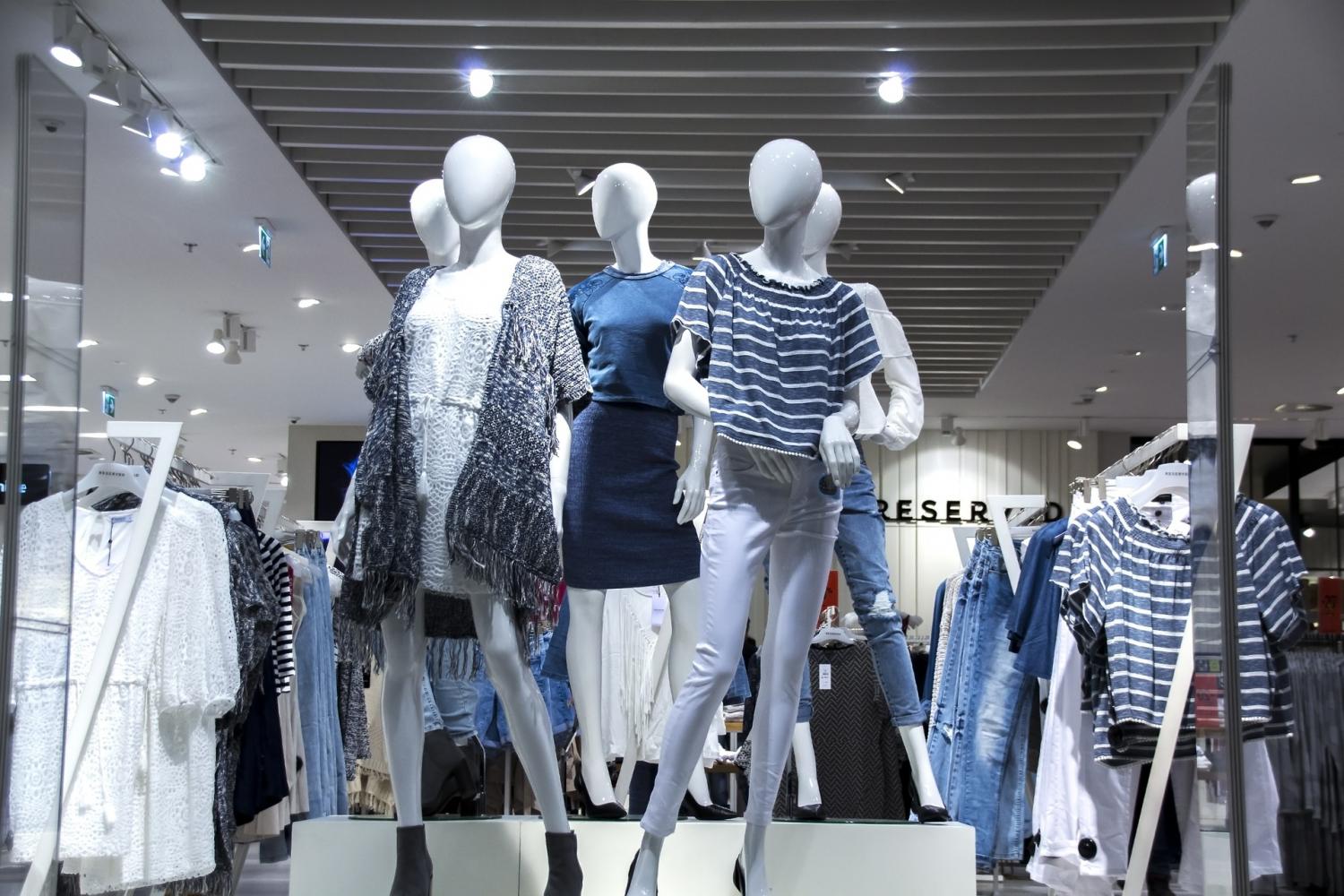
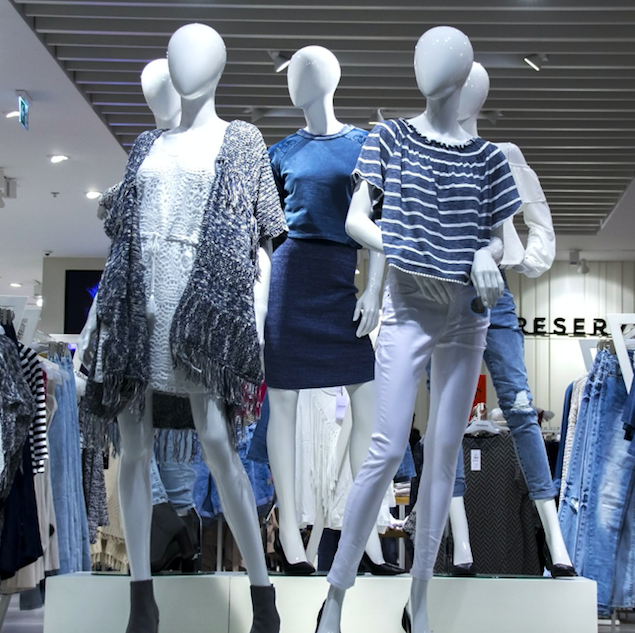
President Donald Trump may have “saved Christmas,” but many retailers are still on edge, even if it appears that the White House, for now, has listened to their fears.
Top brands are preparing for a consumer backlash sparked by the Trump administration’s trade wars and tariff policies, which are exerting upward pressure on prices at retail stores. Retailers are especially vulnerable, so they have been pushing back, with limited success. However, J.C. Penney has adopted a strategy that may have an impact. It involves taking a stand for a particular subset of consumers—namely, women and girls.
Consumer brands are feeling the squeeze
Until recent months, ordinary consumers have been somewhat insulated from the impacts of White House trade policies. A widely criticized 2018 tariff on imported solar panels, for example, has been counterbalanced by favorable state-level policies, among other factors.
Manufacturers also began warning of higher prices when the Trump administration imposed tariffs on imported steel and aluminum last year. However, those effects take some time to trickle through the supply chain.
Retailers are much more vulnerable. They began to step up their warnings in May of this year, after new tariffs were imposed and the president alluded to another new tariff list in the coming months.
Walmart CFO Brett Biggs told reporters in May that “increased tariffs will lead to increased prices for our customers,” the Associated Press reported. By June, Macy’s and J.C. Penney also joined hundreds of brands and manufacturers outlining their case against the president’s trade policies.
Disproportionate impact on women and girls
J.C. Penney drew attention to the impact on women, girls and families in a formal letter to the Office of United States Trade Representative dated June 17.
Retail Dive was among the many trade publications taking note of the letter. It outlined how the addition of new tariffs would “hurt Penney's core customer: middle-class females who shop for their families on a ‘marginally’ higher household income than the U.S. median.”
So far, coverage of the letter has been largely confined to the trade press. One exception is CBS News, which noted that “of the 19 items the retailer listed as ‘priority items’ hit by the tariffs, 13 are women's and girl's apparel.” The list includes everything from women’s sweaters and tank tops to underwear, sleepwear and footwear.
Working women at risk
The letter itself minces no words. Writing on behalf of J.C. Penney, attorney David Spooner emphasizes the impact on women shoppers:
“The Administration’s proposed tax increase disproportionately hits women’s and girls’ apparel, but this understates the impact on women. Women often do the shopping for their families, and so feel it acutely when the government increases taxes on basic household items…Increasing taxes on boy’s shoes, kitchen appliances, sheets and blankets and curtains, and hundreds of other basic clothing items and home goods, will hurt all moms who don’t have inexhaustible disposable income. It will force them to make tough choices.”
Left unsaid is the impact on women who lose their jobs as a result of brick-and-mortar store closures, though that impact looms large behind Spooner’s words.
Women have long dominated employment in the retail sector, but the rise of e-commerce has introduced a new dynamic. As brick-and-mortar fades from the picture, warehouse and delivery worked—characterized by a male workforce—is rising.
By 2017, analysts were already noting that women were losing jobs in retail while men were gaining. The Trump administration tariffs may accelerate that trend.
Analysts have been warning that retailers are especially vulnerable to the new tariffs. One estimate puts 12,000 stores at risk for closure this year. That estimate appears to be on target. Last month, CNBC reported that Coresight Research’s running list of store closures has topped 7,000 in 2019.
That figure has been offset by slightly more than 3,000 new retail stores so far this year. Nevertheless, the number of closures is set to exceed, by a large margin, the record high of 8,139 listed by Coresight in 2017.
J.C. Penney’s plans will add to the list. Earlier this year, the retailer announced the planned closure of 18 department stores and 9 home furnishing stores slated for 2019. That’s a far cry from the total of 146 stores Penney closed in 2017 and 2018. Nevertheless, additional closures are not out of the question for 2020 and beyond.
Fasten your seat belts
With a new round of tariffs set to take place this September—in advance of the holiday shopping season—analysts are already warning of more trouble for retailers. On August 6, UBS observed that apparel, footwear, electronics and toys are “rather elastic,” making it more likely that consumers will resist price increases.
J.C. Penney, for one, appears to have a strategy for ramping up its case against the tariffs. The company’s June 19 letter includes a stinging reference to a beloved children’s book:
“Indeed, List 4 includes a proposed tariff on Christmas ornaments. For goodness sakes, a tax on Christmas ornaments? One wouldn’t think the Administration would seek to emulate the Grinch, who left little Cindy-Lou Who with walls devoid of ornaments and ‘nothing but hooks and some wire.’”
With its emphasis on women, girls, families and Christmas, J.C. Penney has zeroed in on areas where the Trump administration is perceived to be vulnerable.
That conversation has already caught the eye of the trade press. It would not take much to move the issue into the mainstream of both social media and conventional media as well.
Join us at 3BL Forum: Brands Taking Stands – What’s Next, at MGM National Harbor, just outside Washington, D.C., on October 29-30, 2019. The two-day event will continue our newly established tradition of bringing corporate leaders together on a fast-paced main stage, keenly focused on the ‘why’ and ‘how’ behind their thinking as we navigate a rapidly changing business environment. Receive a 25 percent discount using this code PUNDIT2019AUGUST when you register here during the month of August, 2019.
Image credit: Pixabay
These Companies Are Now Responding to the IPCC Report Findings
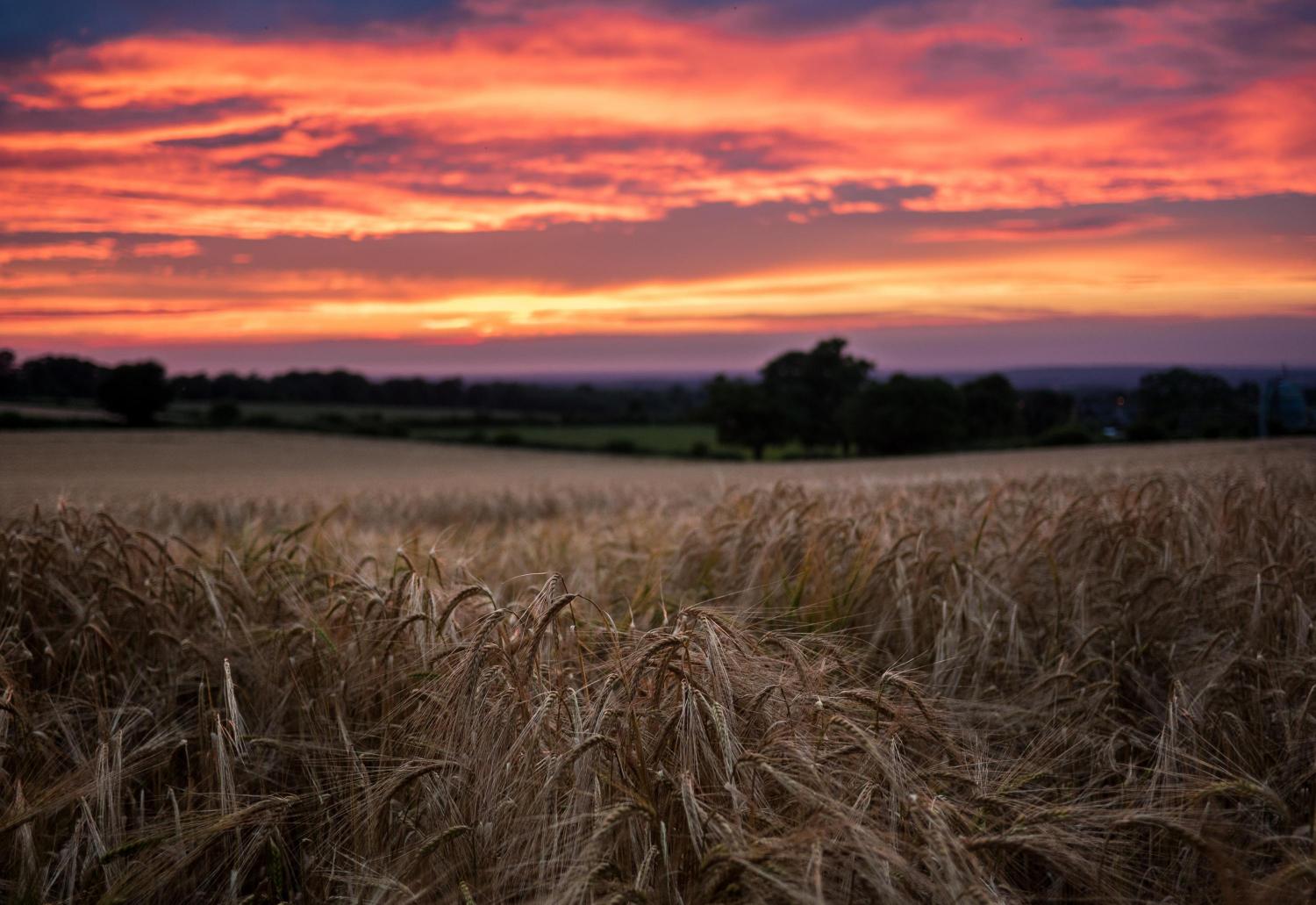
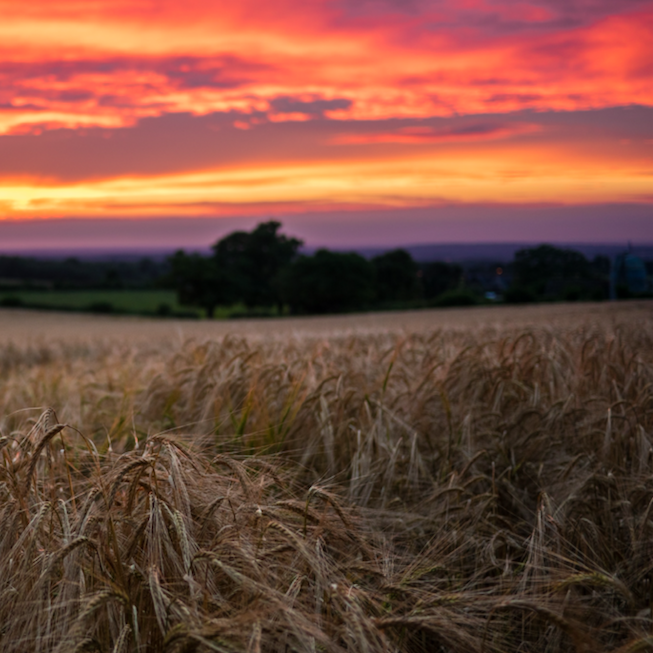
By now, you’ve likely read about the Special Report on Climate Change and Land, released last week by the U.N. Intergovernmental Panel on Climate Change (IPCC). The report highlights how the rise in global temperatures, linked to increasing pressures on fertile soil, risks jeopardizing food security for the Planet. That is planet with a capital P, meaning everyone.
And everyone—governments, companies, farmers and consumers—has a responsibility to help mitigate the pending crisis headed toward us, according to the report.
If you didn’t read the full 1,200-page report, here is a recap: More than 100 scientists looked at 7,000 studies to understand how human impacts on land are causing greenhouse gas emissions, how climate change is affecting our ability to produce food, and how changing what we do on farms and in forests can help fight climate change. They found that farming, forestry and other human land use is responsible for 23 percent of global greenhouse gas emissions and that keeping global warming under 2 degrees Celsius will only happen if we reduce those emissions.
Do more using less land—and do so, sustainability
Like any good U.N. report, this one is not shy to offer recommendations. At the top of the authors’ list: Countries must commit to sustainable land use to help limit greenhouse gas emissions before it is too late.
The authors put out a strong call for greater use of new, more efficient, and sustainable agriculture technologies and methods capable of producing more food with less land, particularly food that is resistant to extreme weather conditions such as drought and flooding.
They called on the global community—with a keen eye toward food producers and retailers—to reduce food waste.They urged greater efforts to protect ecosystems that are already rich in carbon, like mangrove forests, rainforests and peatlands, and for more efforts at reforestation. And they confirmed the recommendations we have heard from numerous others: Western countries must do more to replace, or at least partially shift, their high-meat diets with plant-based alternatives.
“This report really underscores the importance and urgency of lands,” Will Turner, senior vice president of global strategies at the nonprofit Conservation International, told Fast Company. “What we do to protect and restore land this generation will affect whether our children, and those they share the planet with, are going to suffer. . . . We’re making some progress on managing lands and climate change generally, but we’re making incremental progress against an exponential problem."
But wait, there is hope in the IPCC report
Before you click to the next article, wait! It’s not all doom and gloom. While the scale of change must accelerate quickly, there are more and more examples every day of businesses working with nonprofit organizations and researchers to address the challenges identified in the report. We offer a few examples that will hopefully spawn many more in the weeks, months and years ahead.
Reducing food waste
According to ReFED—a collaboration of businesses, nonprofits and government leaders committed to reducing U.S. food waste—every year, American consumers, businesses and farms spend $218 billion growing, processing, transporting and disposing food that is never eaten. More than 50 million tons of it are typically sent to landfills. Ten million tons are discarded or left unharvested on farms. Altogether, food waste consumes 18 percent of cropland and 21 percent of landfill volume.
Where to start? Why not with one of the world’s largest retailers: Walmart. It has long been aiming for zero waste—including food waste—in its operations in Canada, Japan, the United Kingdom and the United States. In 2019, Walmart Canada formally committed to achieve zero food waste by 2025.
The retailer’s strategy includes strengthening its forecasting and ordering tools and training employees on how to better care for food and manage it at the end of shelf life. Walmart has also created a customized field-to-store network for highly perishable products, which is designed to reduce days in transit. In 2019, Walmart says it had 90 million fewer wasted units in its fresh departments in the United States as compared to the year prior.
Walmart is also jumping on the “ugly” fruit and veggie bandwagon at its Asda stores in the United Kingdom where, in 2019, it sold more than a million boxes of ugly produce, avoiding 1.5 million pounds of waste.
If food is no longer edible, Walmart says it will work to convert it to animal feed, compost or energy.
Using technology to improve crop yields
Illumina, a San Diego-based company that provides sequencing and array-based solutions for analysis of genetic variation and function, is working to address the challenge of feeding the global population. Through the use of its microarray and next-generation sequencing technologies, it is helping farmers identify the genetic markers linked to desirable traits, informing cultivation.
The company has started the Illumina Greater Good Sequencing Grant Program to help researchers around the world. The annual grand prize winner receives free access to Illumina sequencing data. One past winner, the Biosciences Eastern and Central Africa–International Livestock Research Institute Hub, is using Illumina sequencing to better understand and combat two viruses responsible for infecting cassava crops throughout Africa.
Tomorrow, we’ll discuss more examples of how the global food system is evolving—from the shift to what we eat, to how technology can save some of our most beloved foods, to how more companies are taking action to transform their supply chains.
Image credit: Jamie Street/Unsplash
Equinox and Brand Reputation: Here Today, Gone Tomorrow


It is not unusual for fitness centers to focus their branding on personal achievement, and Equinox excelled at it—until last week, that is, when the media caught word that Equinox investor Stephen Ross was planning a fundraiser for President Donald Trump. Suddenly the carefully-groomed image has turned inside out. Members are bailing, and competitors smell blood. All because Equinox found itself embroiled in the middle of a controversy in which no business wants to be mired: accusations of purpose-washing.
What is purpose-washing?
The concept behind purpose-washing, or “woke-washing,” has been bubbling under the surface as the corporate responsibility movement matures.
Unilever CEO Alan Jope articulated it in a speech earlier this year:
“There are too many examples of brands undermining purposeful marketing by launching campaigns which aren’t backing up what their brand says with what their brand does. Purpose-led brand communications is not just a matter of ‘make them cry, make them buy.’ It’s about action in the world…’”
Purpose-washing resonates far and wide in today’s era of employee activism. Both employees and consumers expect brands to reflect the fundamental values they espouse in their corporate responsibility reporting and their branding messages. They also expect companies to respond to issues of public concern.
The Equinox situation represents a corollary: Behind-the-scenes brand owners and investors are also expected to act in ways that reflect and support the brand image.
What happened to Equinox?
Ross owns Equinox and other fitness properties such as SoulCycle under his Related Companies firm, where he sits as chairman and majority owner. It’s no accident that Equinox has come in for the majority of the attention, though—even though some have been quick to defend Ross as a passive investor in these companies, and a spokesperson for Equinox distributed a statement to the media emphasizing that point.
The Equinox brand launched in 1991 and adopted its signature “It’s not fitness. It’s life” marketing campaign in 1999.
That campaign has stuck for the past 20 years. The brand has been built around making fitness part of one’s personal identity. The purpose of Equinox has been to take working out beyond rote exercises in the sweaty halls of the local gymnasium and transform it into a spiritual quest.
The brand’s other long-running slogan is “commit to something,” which reinforces the suggestion that personal fitness can sub in for other kinds of commitments.
A 2016 article in GQ magazine provides some key insights. One member summed it up for reporter Carrie Battan, telling her that “the journey of Equinox … is a journey into self-discovery.”
An Equinox member herself, Battan observed: “Spend enough time at Equinox, and it starts to feel less like a gym and more like church, less like exercise, more like worship—an exorbitantly expensive religion in which everyone prays to the gods of achievement.”
For some Equinox members concerned about the policies and behavior of the president, the Ross fundraiser was like having the rug pulled out from under their feet.
Intentional or not, the fundraiser slapped the Trump brand on the Equinox doors. Members found their personal quests lumped into a physical manifestation of their deepest concerns, whether it involves misogyny, racism, xenophobia, homophobia or a combination of all four—all supported by their own membership fees and add-ons.
How boycotts can work, as they open a door to the competition
In a Washington Post article last week, fashion critic Robin Givhan portrayed the fundraiser as a unique betrayal, but she also questioned whether a boycott would have any effect beyond a smattering of dropped memberships. She described the environment at Equinox as a transformational feeling that “can sometimes be hard to come by.”
However, Equinox has risked a blow to its brand reputation, and good brands in decline can be more vulnerable to boycotts. Boycotts can also have an impact where alternatives are close at hand. Equinox’s competitors in the crowded space of personal fitness are leaping at the opportunity to attract members with special offers and free trials.
On August 8, USA Today noted that Town Sports International, with 185 clubs in four major cities, was offering free workouts through the weekend. By August 10, Town Sports had plenty of competition, including Crunch and New York Sports Clubs, as well as trainers with individual studios.
Market Watch reporter Jeanette Settembre noted that, among other issues, “critics slammed the gym for being hypocritical for billing itself as LGBTQ friendly and supporting a president who has opposed the Equality Act, and whose policies have targeted people of color and women.”
What happens next?
Of particular interest is the approach of celebrity fitness instructor Tracy Anderson. Settembre was among those citing Anderson for her pledge to donate 20 percent in revenue from classes at several of her fitness centers last weekend to the Human Rights Campaign, Everytown for Gun Safety and the Martin Luther King Foundation.
The offer demonstrates a keen understanding of the purpose-washing at play in the Equinox situation. Anderson’s donation provides a clear contrast with the self-improvement-as-a-mission message promoted by Equinox. She provided her clients with an opportunity to offer material support to top influencers in the area of social justice.
If Equinox continues to lose members over the Ross fundraiser, it will be interesting to see how the company responds. Perhaps providing opportunities for its members to practice what Equinox preaches would be a good start.
A quick reminder about this October’s 3BL Forum!
Join us at 3BL Forum: Brands Taking Stands – What’s Next, at MGM National Harbor, just outside Washington, D.C., on October 29-30, 2019. The two-day event will continue our newly established tradition of bringing corporate leaders together on a fast-paced main stage, keenly focused on the ‘why’ and ‘how’ behind their thinking as we navigate a rapidly changing business environment.
Receive a 25 percent discount using this code PUNDIT2019AUGUST when you register here during the month of August 2019.
Remember, tomorrow, and every Wednesday, is Brands Taking Stands Day on 3p! We’ll focus on why more companies and their executives are taking stands—whether over the most vexing social and political issues of the day, or by embedding sustainability and social impact into their everyday operations which, in our view, is taking a stand.
Image credit: Victor Freitas/Unsplash
How Organic Valley Achieved 100 Percent Renewable Energy
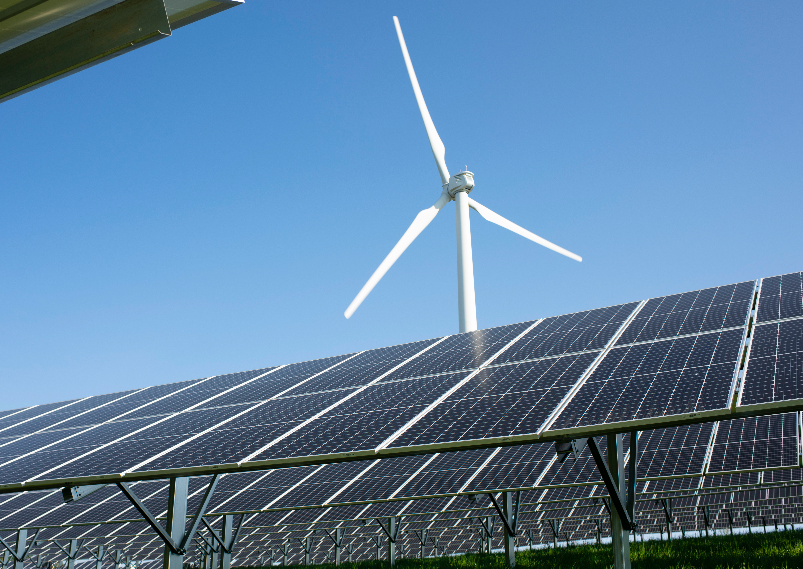
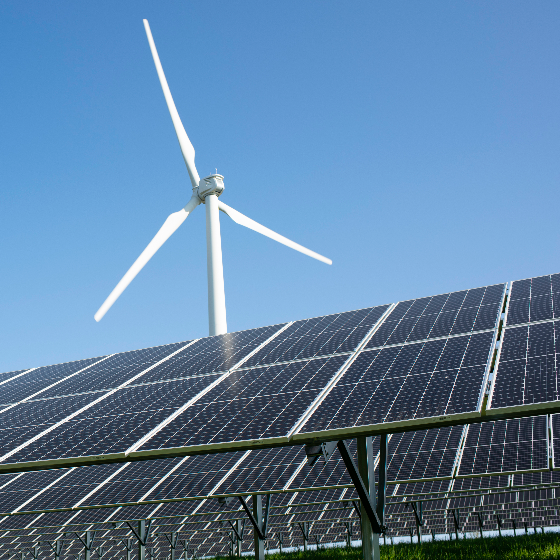
Tariffs imposed in 2018 have created uncertainty and job losses in the solar industry. While challenging, the silver lining is that the looming threat of more tariffs has inspired companies, states, and businesses to innovate in order to continue to shift the U.S. energy system toward more renewable sources.
One example of a unique approach to shift the U.S. closer to a clean energy future are 10 solar projects that dot the Wisconsin and Minnesota countryside, called the Butter Solar portfolio.
Organic Valley, the largest cooperative of organic farmers in the U.S., is the company that propelled the Butter Solar portfolio into existence. The venture was made possible with the help of the many partners who came together under the Organic Valley Community Solar Partnership to achieve the dairy and egg cooperative’s goal of 100 percent renewable energy.
The partnership includes Organic Valley; Upper Midwest Municipal Energy Group (UMMEG), a group of 16 municipality utilities; OneEnergy Renewables, a North American developer of community and utility-scale solar energy projects; and BluEarth Renewables, an independent power producer.
Because Organic Valley is a cooperative, it could not work directly with a local solar project and instead needed to go through local utilities. This is why Organic Valley approached the Cashton utility, which brought it back to its fellow UMMEG members. From there, interest grew among UMMEG. As a result, 13 out of the group’s 16 members agreed to join the partnership due to cost savings and capacity value opportunity, said Stanley Minneck, Organic Valley’s energy services and technology manager.
Richard Heinemann, an attorney for the UMMEG, confirmed that its decision to join the partnership lies in the economics: "It's a signal that green energy is, from a cost standpoint, competitive [with fossil fuel sources].”
To set up the partnership, OneEnergy Renewables worked with BluEarth Renewables, which built and now operates the installations that became the Butter Solar Portfolio. UMMEG buys the generated electricity for a fixed rate and then sells the electricity to Organic Valley. Then, Organic Valley purchases renewable energy certificates (RECs)—documents that represent property rights to renewable electricity—to achieve its goal of being 100 percent powered by renewables, Tim Sylvia of PV Magazine reports.
How Organic Valley helped bring renewable power and jobs to the Midwest
The partnership also demonstrates that a large company, including one structured as a cooperative, can achieve environmental goals while creating renewable electricity for its neighbors. The partnership entails an eight-acre solar installation on Organic Valley’s property in Cashton, Wisconsin, and other installations across the Midwest, which provide 23,000 individuals with reduced energy costs and cleaner energy options.
During an interview with TriplePundit, Minneck pointed out that it was important from the beginning that Organic Valley purchase RECs that produced energy for more than just the cooperative’s needs.
Six communities in the Midwest that will benefit directly from the community solar partnership include Arcadia, Cashton, La Farge, Merrillan and Viola in Wisconsin, as well as St. Charles in Minnesota, Waste 360 reports. For example,all subscribers of the Cashton Municipality will see savings on their energy bills for the next 25 years, Minneck told 3p.
“These projects, and others like them, create regular and meaningful work for dozens and dozens of solar professionals, like the hard-working folks from Arch Electric based out of Plymouth, Wisconsin,” Minneck wrote in a recent Organic Valley blog post. “Providing opportunity for others to join the renewable energy industry is an essential part of why partnerships like the Organic Valley Community Solar Project matter.”
Collaboration key for Organic Valley to finance this venture
Organic Valley also recruited other brands to sign on and purchase RECs to finance the partnership and increase the amount of renewable power available in the Midwest. Dr. Bronner’s, the Wisconsin capital city of Madison and Clif Bar purchased RECs before the project finished, bringing the total capacity of the project to 32 megawatts, Minneck said.
“Without all of the partners participating, the economics would not have worked out,” Minneck concluded.
Image credit: Organic Valley
Mentorship Changes the Game in Early Childhood and Elementary Education
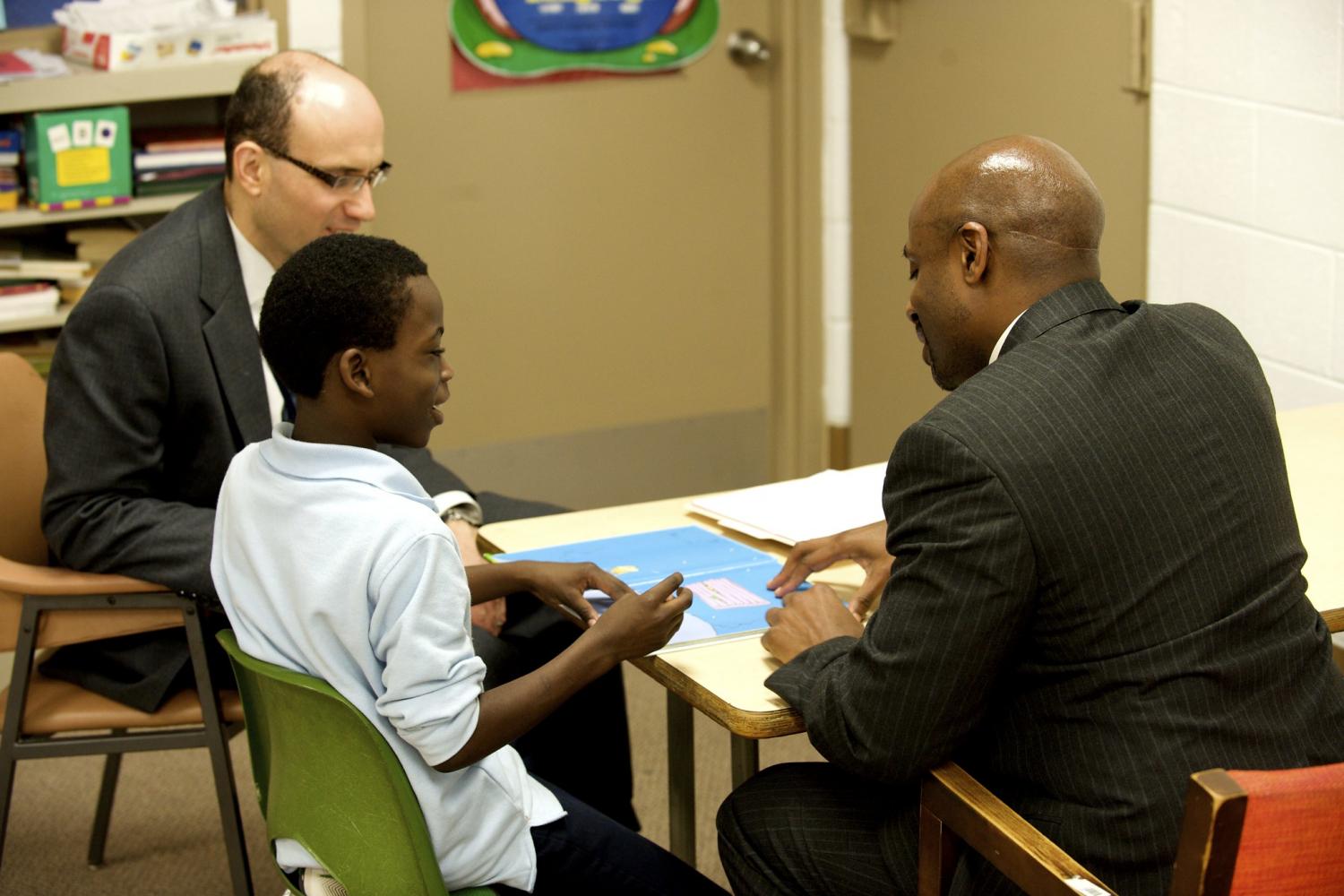
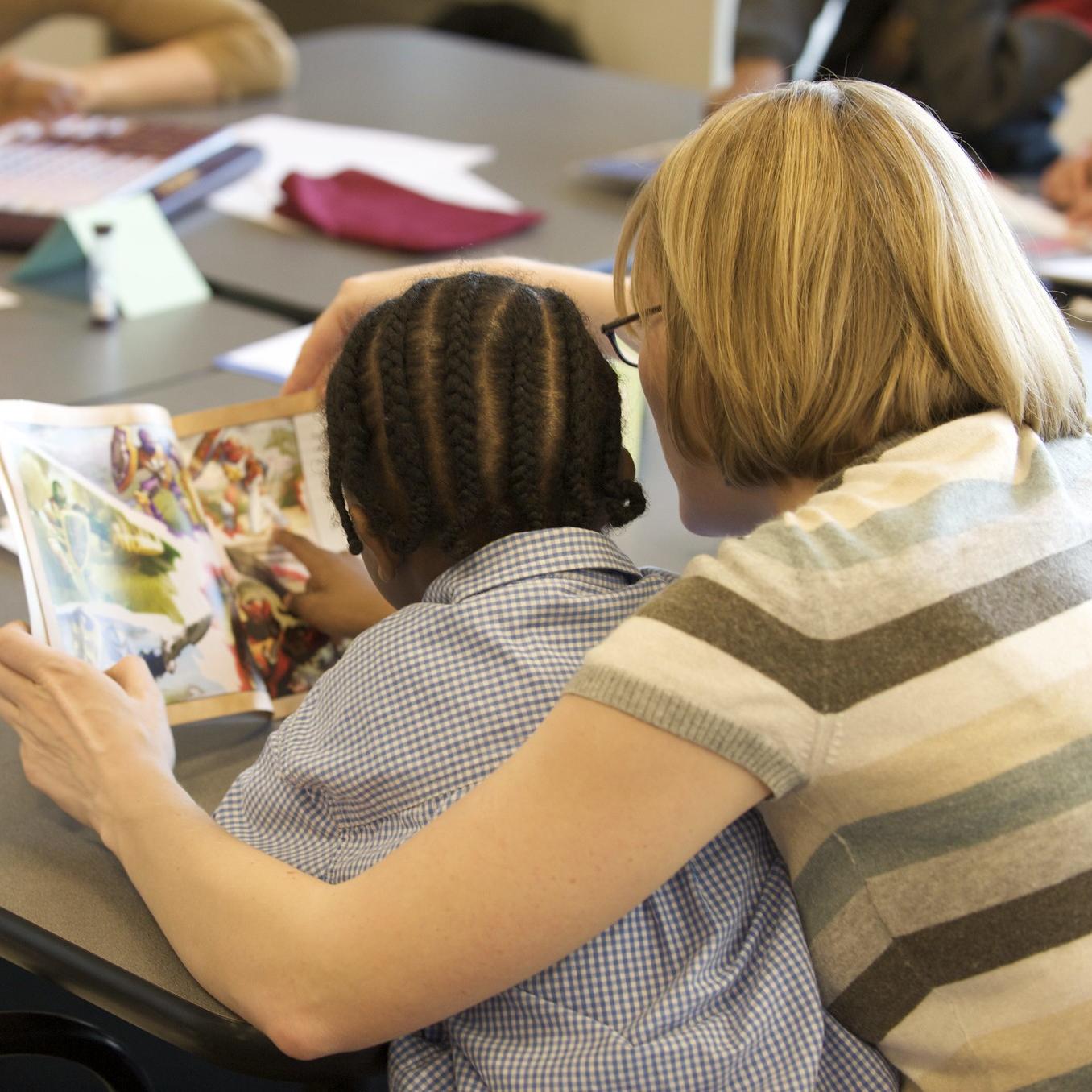
It’s amazing to see what can happen when an adult and a child spend 30 uninterrupted minutes together with a book.
So says John Gibson, an Atlanta lawyer who specializes in intellectual property litigation. Gibson also serves as the board chair for Everybody Wins! Atlanta, an innovative mentorship program that aims to instill a love for reading in children and, in the process, improve the reading levels of American students.
Studies show that reading aloud to a child is the best way to improve literacy. For thousands of children throughout the country, however, there is simply no one to read to them. Parents may be juggling multiple jobs, working long hours, or simply not around. For these children, the impact can be devastating.
According to research, a student who can't read on grade level by third grade is four times less likely to graduate by age 19 than a child who reads proficiently by that time. Add poverty to the mix, and a student is 13 times less likely to graduate on time than his or her proficient, wealthier peer.
In Georgia, where two-thirds of fourth grade children are not at a proficient reading level, the statistics paint a bleak picture.
Sometimes people just need an extra hand
Gibson, who has volunteered with Everybody Wins! since 2011 at Hope-Hill Elementary School in Atlanta’s Old Fourth Ward, says the role of teachers and schools is becoming tougher as class sizes increase, budgets shrink, and testing requirements grow each year.
“The schools invite us in because they know that every bit helps,” Gibson tells us. “The schools really want their students to succeed. We are one piece of the puzzle.”
Everybody Wins! was founded nearly 30 years ago by Arthur Tannenbaum and his wife, Phyllis. Tannenbaum, a chief financial officer for a textile corporation in New York City, was distressed that disadvantaged children didn't get what he considered to be an equitable education. Phyllis, an elementary school teacher, knew firsthand the benefits of reading and suggested that her husband develop a reading program which took place during lunch and recess and didn't pull children out of class.
In 1991, Tannenbaum took an early retirement and formed the privately-funded nonprofit Everybody Wins! New York. Today, there are chapters in Boston, Pittsburgh, Washington, D.C. and Atlanta.
Changing a child’s life in the time it takes to have lunch
Through Power Lunch, the primary program of Everybody Wins!, teachers select students in first through fifth grades who read below grade level and would benefit from the attention of a caring adult. Everybody Wins! pairs the students with volunteers, who promise to read to the same reading buddy consistently once a week during his or her lunch hour for the entire year.
During the 2018-2019 school year, Power Lunch volunteers in Atlanta were paired with more than 500 students at 10 low-income Title I schools. And because there is always a waiting list of more kids who want to be in the program, Everybody Wins! is constantly recruiting additional volunteers.
Because work schedules sometimes fluctuate, volunteers also have the option to "share" a student with another volunteer: The two volunteers then take turns reading to the child, visiting the child twice a month instead of weekly. Children are not drilled in phonics or whole-word reading methods. The goal of the program is to improve literacy by making students want to read.
The other important element of the program for the students is the consistent presence of an adult in their lives, who will show up for them every week and who they know wants them to succeed. “Consistency is so important,” says Gibson, whose wife is also a Power Lunch volunteer.
The Power Lunch program is free to the students and the hosting school. The program is funded solely by donors and grants from individuals and organizations such as the SunTrust Foundation based in Atlanta. The support of the SunTrust Foundation in particular will be used to help students bridge the gap between reading and financial literacy through interactive activities that introduce basic money management and financial concepts. Donor funding also allows Everybody Wins! to purchase books for students and helps expand the number of schools it can serve.
And it’s not just the kids who benefit from the program—based on comments from mentors, it’s clear how the organization got its name. “I have gained more than I can possibly express from the program, including a deeper understanding of what a school day is like for today’s elementary students, and a glimpse into the lives of teachers,” said Caitlin Daugherty Kokenes, a reader with Everyone Wins! Atlanta since 2016. “All of these things help me be a better advocate for public education and the needs of our system.”
Results speak for themselves
Each year since the Atlanta chapter began in 1997, volunteer readers have spent more than 6,000 hours reading with their students. In a recent study of the program, 91 percent of Power Lunch students showed measurable reading improvement from the beginning to the end of the school year, while 80 percent of students in the program passed the reading portion of the statewide standardized test.
For Gibson, however, it’s the smaller aspects that show the true results.
“The first time you meet with a new student, they are shy,” he says. “They hesitate to speak to you and definitely don’t want to read out loud. But at the end of the school year, they can’t wait to tell you what they did over the weekend, they want to read to you, and they remember that vocabulary word you shared with them last week … Now they can say it and know what it means. It’s absolutely amazing to see their reading and their confidence grow.”
He notes that the end of every school year is emotional. The volunteers and students meet for a presentation in the gym, where each mentor and student take a picture together. Gibson has pictures in his office from every year. “You hope you will see them next year, but if you don’t, you know you have done your part to advance them to the next stage in their life. You know you have given them the means to succeed.”
This article series is sponsored by the SunTrust Foundation and produced by the TriplePundit editorial team.
Image credit: U.S. Department of Education/Flickr
The Future Is Now for Homes Without Natural Gas


Will the home of the future be one without gas stoves, heating units and water boilers? It will be if you decide to purchase a new home in Berkeley, California, which just became the first city in the country to ban the use of natural gas in new buildings. This is a groundbreaking move that could herald a new era of construction—one that results in the adoption of more sustainable sources of fuel and electricity across the country.
“Berkeley has a long history of being the first in the nation to do something, from implementing curbside recycling in the early 1970s to eliminating Styrofoam in the 1980s,” Berkeley Mayor Jesse Arreguin said in a press statement. “This week, history is repeating itself with our vote to prohibit natural gas in new construction.”
Until relatively recently, natural gas has mostly been ignored as a primary climate change culprit. For years, the climate movement focused on more emissions-intensive fossil fuels such as coal. Some even considered natural gas a “bridge fuel” between coal and renewables, as it could fill in energy demands with lower emissions until solar and wind power were ready to pick up the slack.
That argument is not heard much anymore. Part of the reason is because the United States has successfully shifted more electricity production away from dirty coal. Coal consumption for power generation fell from a peak of 1,045 million short tons (MMst) in 2007 to an estimated 739 MMst in 2015, and is expected to drop all the way to 651 MMst by 2020, according to recent data from the U.S. Energy Information Administration.
The other reason is natural gas is not actually that sustainable, nor climate-friendly, in the long term. The fracking boom has devastated landscapes across the U.S., with strong evidence of groundwater pollution and even earthquakes due to land instability. Moreover, the venting and flaring of natural gas into the atmosphere by drillers is now a key contributor to the U.S. carbon footprint, and may be negating any climate benefit from natural gas’s relatively cleaner profile.
That is why, over the past few years, a new movement has emerged to shift U.S. energy away from natural gas just as the country had been shifting away from coal. It is no surprise that it was a city that made the first move to reduce natural gas consumption. Cities have been at the forefront of climate action, particularly after a certain climate-denying president took office in 2017. Through partnerships like the C40 Cities Climate Leadership Group, over 100 cities have committed to 100 percent clean energy while others have pledged carbon neutrality. And there are already signs that other cities are looking to follow Berkeley’s move.
“Given the urgency of reducing emissions to avoid the worst impacts of global warming, Berkeley’s ordinance is significant because it sets in motion what could be a huge breakthrough in building decarbonization,” Mark Specht, an energy analyst at the Union of Concerned Scientists, wrote in a blog post last month.
If cities are to meet their climate targets, they’ll need to dramatically cut natural gas consumption. Berkeley estimated that an astounding 27 percent of the city’s greenhouse gas emissions came from natural gas. Meeting its own pledge means ensuring less natural gas usage in residential and commercial buildings.
“Buildings, and the natural gas burned inside, are a big contributor to global warming,” Specht wrote.
There’s another benefit, too. It’s cheaper to build homes without gas hookups, which are also a hazard during natural disasters such as the earthquakes, for which California is at risk. If they are designed properly and are less costly, homes built in the future could both help the environment and address ongoing affordable housing shortages.
Berkeley is not a big city, with a population of just over 100,000, so its impact alone will be small. That is why city leaders hope that other cities will follow and make natural gas-free homes as common as curbside recycling, another Berkeley first, is today.
“What city, county or state will be next?” said Arreguin. “I call upon you to contact your local, regional and state representatives to keep the momentum going.”
Image credit: Mario Mesaglio/Unsplash
More Investors Exploring Nature-Based Growth Opportunities


Can capitalism drive environmental stewardship? That’s what Ethical Corporation is suggesting in its Restorative Climate Strategy Briefing.
In an industry driven by crunching numbers and making profits, it can be easy to lose sight of the fact that investors at the top of their game are looking to the next decade—not the next quarter—and for smart, sensible narratives that resonate.
Investors wooed by bamboo
Investing in a bamboo farm in Nicaragua may make heads tilt, but this material’s potential is what EcoPlanet Bamboo sold to its investors. This example in Ethical Corp’s briefing details how a well laid out business plan compelled investors to take part in an environmental restoration project—not for the sake of charity, but for profit gains.
Step one is planting bamboo on degraded land that was once rainforest—destroyed to make way for agriculture, then cattle. Step two: Set up a pulping facility the following year to make tissue and toilet paper, reducing the country’s reliance on imports. After the first year of operation, the business became self-sustaining. Bamboo is different from other agricultural and forestry commodities, where the source of revenue dries up after you chop. Bamboo grows up and out. So long as proper pruning techniques are implemented, manufacturing opportunities can scale substantially after five years.
The third part of EcoPlanet Bamboo’s plan expands into those longer-term growth opportunities. The company is piloting a closed-loop biorefinery to make moulded pulp for disposable containers to replace plastics and Styrofoam. An agreement with South Africa-based Mantis hotels equates to future expected gains when the luxury hotel group moves away from single-use plastics and begins to use EcoPlanet Bamboo products.
Large corporations are investing in nature-based solutions too
PepsiCo offers another restorative economy success story in this briefing. The restorative economy isn’t inclusive to only startups and eco-minded small businesses, Ethical Corp says—to date, more than 100 corporations have invested more than $38 million in water funds.
Water is an essential element to PepsiCo’s supply chain and production processes. The company has set a number of goals that aim to contribute to its Positive Water Impact, meaning its efforts and partnerships are designed to enable long-term, sustainable water security for its business and communities that depend on water availability. Accordingly, PepsiCo says it has established an integrated approach to watershed management through a partnership with The Nature Conservancy to restore watersheds in the United States, Latin America and South Africa.
Through this partnership, PepsiCo is working directly with farmers, landowners, businesses, and communities to build efficient irrigation systems, protect upstream forests and establish water funds to replenish at-risk watersheds. In 2018, in Latin America alone, the partnership replenished more than 76 million gallons of water to watersheds.
In its briefing, Ethical Corp reports that more than 40 percent of watershed sources worldwide have been degraded by development, resulting in impaired downstream flows. Working with farmers and communities to reduce chemical runoff and conserve water creates a beneficial way to improve water quality and quantity—and secure water-dependent supply chains like PepsiCo’s.
Nature: The most proven technology to address climate risks
The prevailing takeaway in the Restorative Climate Strategy Briefing is that “companies are realizing one cost-effective way of tackling the climate crisis is by restoring and protecting the biodiversity of the planet … nature is the biggest proven technology to address climate impacts.”
Regeneration—of agriculture, the environment and local communities—ensures that all inputs and outputs are conducive to the health of everyone: upstream and downstream, people and planet. If global carbon reduction goals are to be met by 2030, companies must implement more regenerative practices to support the triple bottom line: people, planet and profit.
Image credit: Luca Florio/Unsplash
How Video Game Companies Can Learn from Social Media's Failures


Earlier this week, I commented on the narrative we keep hearing from some politicians every time there is a mass shooting: that video games, not guns, are to blame. My response was to reiterate what many researchers in science and academia have said—that blaming the video game industry is wrong. To video game companies, I said: Stand up for yourselves, and don’t let others steal your narrative. The facts, as discussed in publications like Vox, make the argument loud and clear.
As one of our TriplePundit writers reminded me in a recent email back-and-forth: “[Blaming video games] is a distraction from the real issue, which is guns. A radicalized person without access to guns can only do so much damage.”
Video games don't cause mass shootings, but do host mass chatter
Well, as with any argument, there is always a caveat—which is often forgotten in this politically polarized climate where everything is shouted as black and white with absolutely no shades of grey. Plus, no company wants to have politicians wag fingers at them, as finger wagging can eventually be followed by endless headlines and, naturally, policy changes—which is why there are reports that one retailer is cracking down on video game ads, yet will still sell guns.
To his credit, Kellen Klein, director at Future 500, pointed out something completely valid, and I’m glad he did. In an email exchange we had, he wrote:
“While it's true that there is no proven link between video games and violence, there is increasing evidence of a link between dialogue occurring on video game platforms and alt-right/nationalist/violent offline behavior.
“So while video game companies might justifiably argue that their actual games aren't encouraging mass shootings, I think some critics might not totally absolve them of responsibility.
“I can imagine a moment in the near future where stakeholders ramp up the pressure on video game companies to better monitor and control the dialogue that occurs on their platforms—similar to how they've gone after Facebook and other purveyors of online ‘connection.’
“The bottom line for me is that video game companies are increasingly looking like social media companies, and thus would be wise to learn from the mistakes of their big tech ‘peers.’”
While I was reviewing sources for my Wednesday article, I did come across plenty of commentary pointing this out, including on news sites such as Slate.
Video game companies are an easy target, but . . .
Here’s one reason why I didn’t add that nuance to my article: The same talking heads and politicians who have made video games the straw man, including Fox News host John Scott, House Minority Leader Kevin McCarthy and Texas Lieutenant Governor Dan Patrick, have conveniently left out the detail that there is more data indicating the links between gamers and heinous offline behavior. It could very well be that these same leaders are just ignorant (wouldn’t be the first time) of this trend—or they simply choose to ignore it because, in the end, it would undercut the argument they are trying to make to their political supporters. It’s pretty hard to say, “Video games are dangerous because some people, well, they may act out based on rhetoric we shout out in public.”
In hindsight, I should have brought up that point. I was wrong not to.
Klein’s point about video gaming companies coming close to following the same path as social media companies is well worth exploring. It’s true that part of the appeal of video games is the camaraderie that can develop while playing anything from Words With Friends (where you can chat with your friends' moms and dads) to Fortnite (where you can talk with your classmates or your pals in the office) to Assassin's Creed Odyssey (where you can engage with that weirdo who lurks in an undisclosed ZIP code).
Once upon a time, social media united the world
But remember that when the likes of Facebook and Twitter first emerged, they were first touted as tools to help unite and bring everyone in the world closer together. As we have seen, many feel the opposite has happened, as these services can tear us apart: If you have unfollowed people after they spouted opinions that made your skin crawl, just know that right now I can see you nodding your head in agreement.
There are countless reasons why social media platforms have found their reputations battered, including the fact that as they became trusted sources of news, they resisted any such regulations that apply to media companies, arguing that they were “technology” companies. The lobbying paid off and, well, we know how that played out.
In fact, it’s clear that social media companies have learned little, if anything at all, starting with Facebook’s tone-deaf decision to rebrand two of its assets as “WhatsApp From Facebook” and “Instagram From Facebook.” And while the response of many social media users is to migrate to different platforms to avoid any and all vitriol (or your parents' friends), the evidence suggests such moves may be in vain.
Instagram: Far more than selfies
Take Instagram, which for many users is seen as a safe haven from the annoying VagueBooking (you know, the people on Facebook who say “I’m having a bad day” as it’s your job to feed their attention-seeking and ask what’s wrong) to even worse, the public shaming, not to mention the conspiracy theories including Hillary Clinton’s nefarious luring of little kids with pizza.
So you think Instagram is safe, cause after all, it’s just food, memes, selfies, abs, duck lips and pets, right? Well, not so fast. There’s no shortage of evidence suggesting the photo-sharing site hosts its share of white nationalism, alt-right conspiracy theories and other hateful behavior. Facebook has said it is working to ban such content, but once again, describing these policies as reactive is an understatement at best.
The video game industry would be wise to learn from social media companies’ ongoing failings. This discussion is hardly new. In early 2018, the head of Xbox called for more inclusive gaming and urged the sector to monitor the tone of online spaces they had helped launch. And last fall, a contributor to The Hill suggested gaming companies put teeth into their terms of service as well as disclose any data related to hate speech occurring within their virtual worlds.
It’s ridiculous enough games like Fortnite have been linked to marriages breaking up; it should not take a senseless act of violence strongly linked to chatter on video game platforms to have gaming companies take stronger action. It’s better for companies to actually enforce what’s in the small print, rather than to have find their reputation in tatters after a tragedy.
Felix Lichtenfeld/Pixabay
In Hawaii, TMT Protesters Put Astronomy, and Developers, on Notice


Probing deep space, exploring the early universe, investigating exoplanets for life. How could something like Hawaii’s Thirty Meter Telescope (TMT), with all of that potential, go wrong?
A history of colonialism is complicating the telescope’s high aim. And this episode serves as a reminder to building developers and construction companies—anyone involved with such a complex plan—about why they need to look very carefully at the types of projects they should pursue. Otherwise, overlooking—or outright ignoring—local context, history, and culture can turn what at first seems to be a marquee project into a public relations and brand reputation nightmare.
Protesters in Hawaii and around the world are rallying with the call “We are Mauna Kea,” in reference to the mountain where the telescope is set to be built. Most are gathering on the mountain itself, on the access road to the summit, for the purpose of halting construction of the TMT. Protesters have remained on the road since July 17.
TMT’s project leaders aspire to join the 13 telescopes already operating on the dormant volcano. Mauna Kea has some of the most ideal conditions for astronomical observations in the world—a high elevation, a stable, dry and cold climate, as well as minimal light pollution.
From the TMT team’s perspective, they have thoroughly included the community in their planning efforts. The project’s backers say they have conducted 20 public meetings and have promised significant contributions to Hawaii’s youth—including $1 million a year to support science, technology, engineering and math (STEM) education on the island. The team behind the telescope says it has already given over $5 million to its THINK Fund, which supports Hawaii’s schools, students and teachers.
The persistence of protests and their recent growth to a worldwide movement, however, raises the question: When can a corporation, research institution or even an academic community be confident that they have adequately listened to stakeholder communities?
The largest instrument on the mountain
Despite continued opposition from the native Hawaiian community and allies, the TMT’s backers say they will proceed with their plans. As of the beginning of August, nearly 20 percent of the entire project has been completed—much of it in far corners of the world—from Japan to India. The TMT is projected to be the largest observatory on earth when it is completed, with a resolution 12 times sharper than the Hubble Space Telescope.
As the project’s organizers continue to build and prepare on the Mauna Kea site, they are also pursing permits for Plan B, the Canary Islands, although conditions won’t be as ideal as Mauna Kea’s summit—and Canary Island environmentalists say that they would seek legal action against the move.
What TMT has done right
The TMT team has communicated with the local community more comprehensively than any other telescope project previously built on the mountain.
It is also important to note that TMT has chosen a site on the summit that it claims will impact cultural and environmental features as little as possible. Assessments did not find archaeological shrines or features, burials, or endangered plants or insects within the site. The site is also located where the telescope will not be visible from culturally significant areas and where minimal grading is required.
Despite the care and thought put into planning, TMT is missing the bigger picture. Opponents are wondering why another telescope is going on the mountain at all.
Building on a troubled history
Astronomy has claimed the summit. Opponents of yet another Mauna Kea astronomy project point out that it will be located on ceded land from the Hawaiian kingdom that has been held in trust for native Hawaiians. The land is currently a conservation district under the Department of Land and Natural Resources (DLNR). In 1968, though, the DLNR granted the University of Hawaii (UH) a 65-year lease for over 13,000 acres on the summit.
UH was given a permit for one observatory, but others were built subsequently without permits, and were only given permits retroactively, after the public spoke out.
Mismanagement has continued. A video by Kanaeokana—a network for Hawaiian language, culture and education—visualizes a timeline of trouble on Maunak Kea, from sewage, fuel and toxin spills to the failure of UH to adopt rules to manage public activities on the mountain.
Even the state’s governor, David Ige, who recently lifted his protest-related emergency declaration, admitted in a public statement in 2015: “We have in many ways failed the mountain. Whether you see it from a cultural perspective or from a natural resources perspective, we have not done right by a very special place.”
A 1998 audit of management on the mountain reads, in part:
“We found that the University of Hawaii’s management of Mauna Kea Science Reserve is inadequate to ensure the protection of natural resources. Efforts to gather information on the Weiki bug came after damage had already been done. Trash from construction was cleaned up only after concerns were raised by the public. Old testing equipment constructed in the early years of development has not been removed as required by the lease agreement.
“We found that new technology requires the university to change its approach to future development within the Mauna Kea Science Reserve.”
A new telescope—bigger, better and more far-reaching—raises a red flag for native Hawaiians, who have been disputing observatory development since UH’s lease began. The fear is that development on the sacred summit will continue, even escalate, all without the change in approach recommended 20 years ago.
“We have to draw the lines in the sand, say: 'No. No more already,'” telescope opponent Walter Ritte told Hawaii News Now in July. “You already have 13 telescopes, and now you’re going to put a giant one up there. This is the beginning of another Waikiki up our sacred mountain.”
Legally, TMT has no further hurdles toward construction. Last year, the Hawaii Supreme Court ruled in favor of the telescope in a case contesting TMT’s permit over concerns about Mauna Kea management and conservation.
Part of the ruling was that five telescopes will be dismantled and the land be returned to its original state.
Space race over all else
To many, the summit of Mauna Kea looks like a space race over all other concerns.
Paul Coleman, an astronomer and physicist at the University of Hawaii, illustrated this perspective to The Atlantic in 2015. “In modern astronomy, you must go with the biggest telescope you can build to the tallest mountain you can find. That is the defining thing for astronomical growth.”
Astronomers at the institutions building TMT, and elsewhere, are catching onto a perspective shift that must occur for any semblance of harmony to be achieved. Last month, astronomy graduate students from across the country penned an open letter opposing the treatment of peaceful protesters on Mauna Kea.
Others are voicing their opinions on Twitter. “Astronomy is awesome, but it’s not life or death. We can take the time to do things right and set an example,” tweeted Emily Rice, assistant professor of astrophysics at College of Staten Island, CUNY, who did graduate work using the Keck telescope on Mauna Kea.
TMT is an example of a high purpose that can be taken even higher. Brands should watch how TMT responds in the coming months to learn either from its success or failure to change its course. The pursuit of the edges of the observable universe, shared by all people, deserves cultural unity.
Image credit: TMT